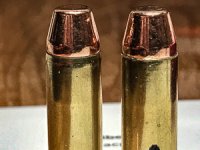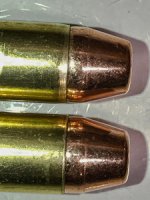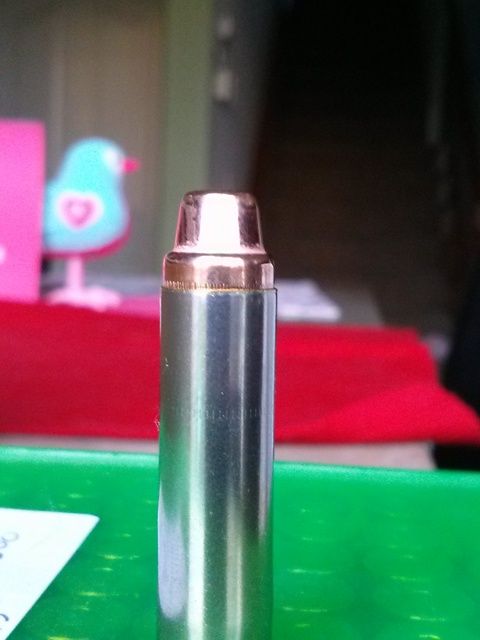Am I taper crimping too tight?
Hard to determine via pic, but it would appear to be too tight. I see a bit much burnishing on the mouth edge; and it also
appears there may be some bullet deformation - but then, it could just be photographic distortion.
Do you have a kinetic puller? It'd be good to pull one just to see what the plating looks like post seat/crimp. Either way, go ahead and shoot 'em and see how they perform (i.e., continue with your work up).
Crimping is a feel thing and there is no substitute for experience.
In June '84 I started loading 38/357 & 44M/44S. So I cut my teeth on revolver cartridges. Turned out to be a good thing, which I didn't realize at the time. In Oct that year, I got a 1911 and started loading 45 ACP. I got a little wrapped around the axle crimping the ACP cartridge as it was apples-n-oranges compared to the very "positive feeling" roll crimp. But it didn't take long to not over-think it and go by feel. I was making excellent 45 ACP ammo in short order (one pet recipe I still use to this day).
Some will say to put calipers on the mouth and measure your crimp. Me, I've never done that. I'm not opposed to it; but I personally have never had a need to do so. And I'm skeptical that doing so can get an accurate measurement that would have any real world meaning. But hey, I've never done it; so maybe I'm wrong. I just going off my extensive experience with a number of fine measuring instruments from past careers.
Obviously, your press has a tremendous mechanical advantage. So it doesn't take a lot of "resistance feel" to apply a proper taper crimp. Here's one of my plated 357's that's taper crimped. This is an X-treme 158 SWC. Yes, it has a cannelure, but as mentioned in a previous post "plated trumps cannelure" when choosing crimp type. You'll see a little nickel "chewing" around the case mouth - that's likely do to the fact that this piece of brass has been loaded countless times, and roll crimped - sometimes heavily (big, full-magnum loads with gobbs of W296

, and is not related to its current taper crimp.




